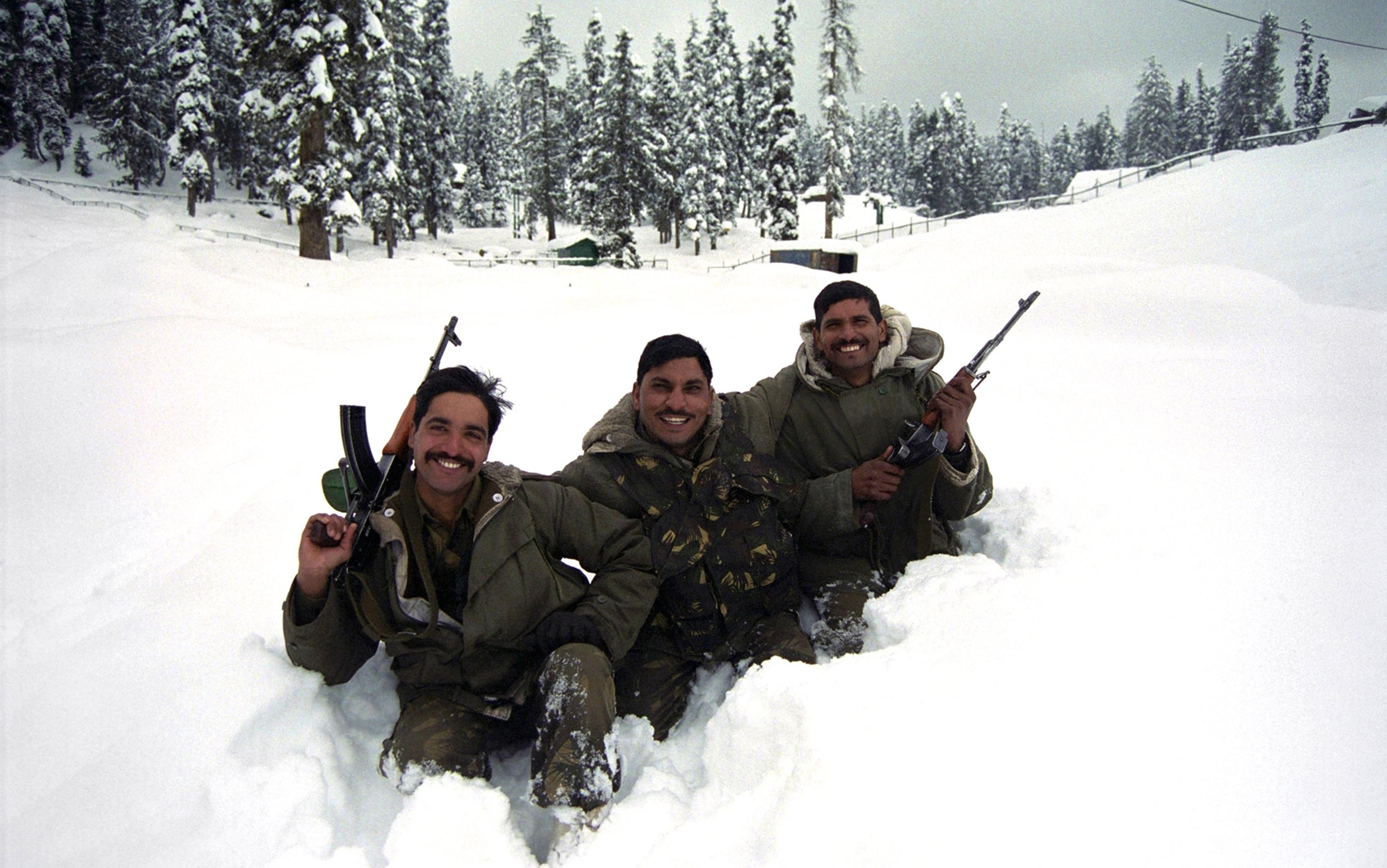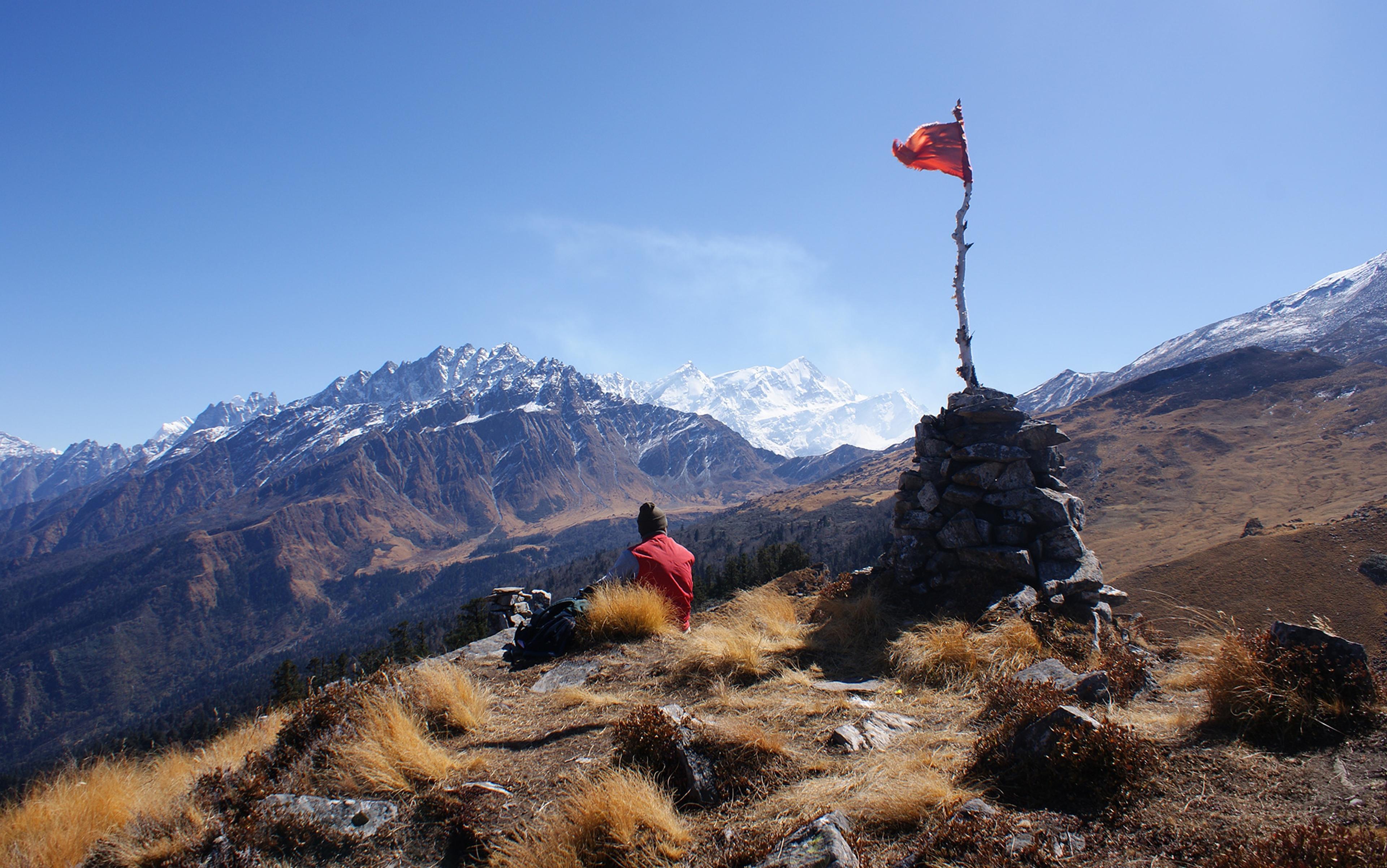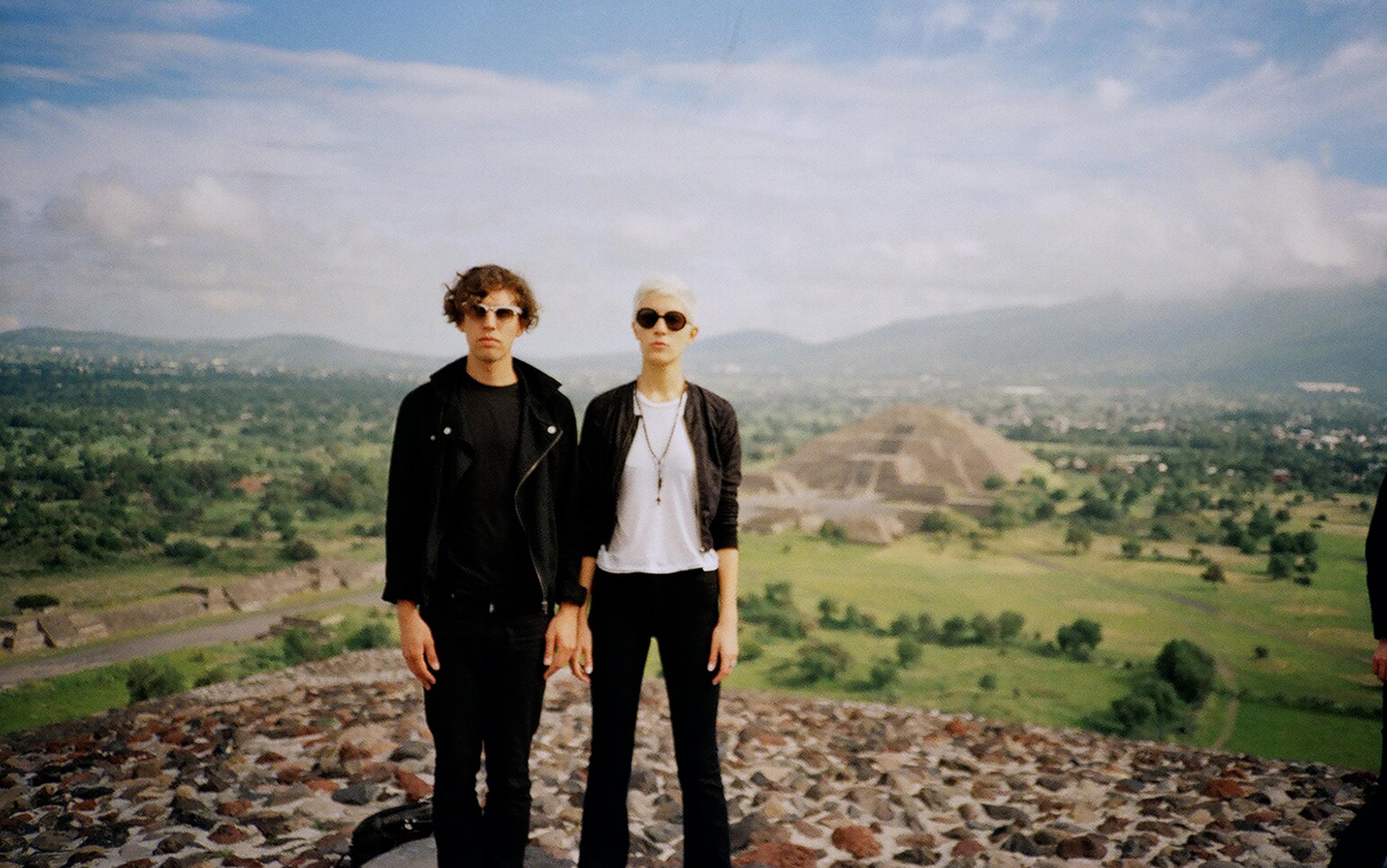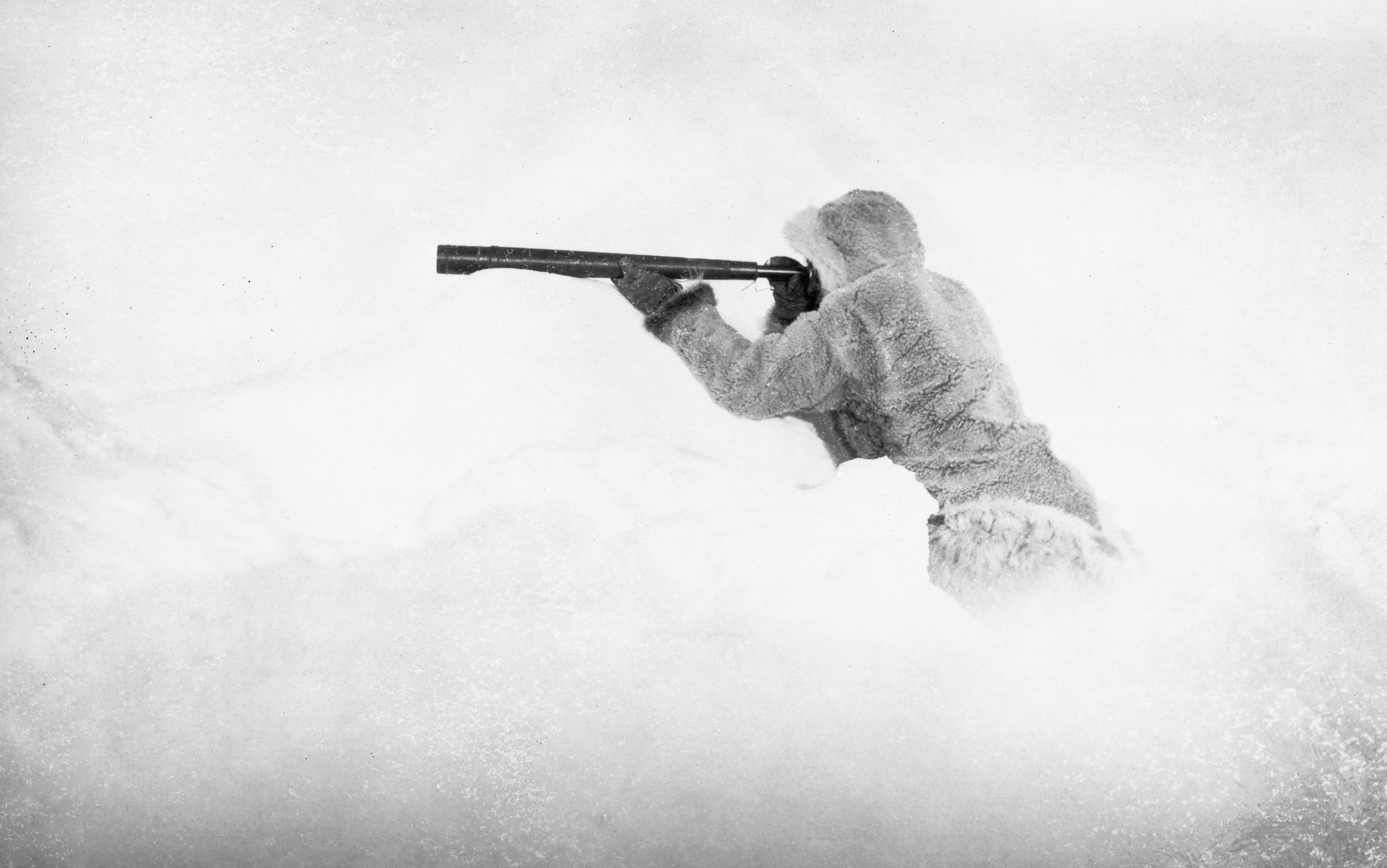The forest transformed on the ‘B’ of the ‘Bang!’. One moment, all was languid, inert, drenched in tropical ennui. The next: thick with tension, hyper-alert, as if the percussive explosion had sucked every hum and thrum from the jungle, concentrating each speck of energy into one resonant echo fading away.
It’s one of those memories that remains vivid in my mind. I can summon it now in exact, technicolour detail.
Beside me, my companion Matt is now standing open-mouthed, looking at the floor where his camera, formerly hanging at his side, now lies strewn in a hundred shattered pieces across the riverbank of an Amazonian tributary in remotest Brazil. Alarmed, we scan the trees for the source of the noise. Then I see her, over in the dug-out canoe, her small oval face wracked with quivering childhood guilt. Down on the river, a four-year-old still has her finger clamped round the trigger of a smoking, full-calibre shotgun.
As tales of travel misadventure go, being shot at by a child in the Amazon ranks among my more sensational. But it’s also a story that evokes the impossibility of predicting what’s around the next corner once people are uprooted from the familiar routines and terrain of home.
Had the negligent owner of the gun – the girl’s father, now entering stage right in a hail of religious incantations and apologetic noises – placed the weapon an inch to the left or right, we might have been lamenting the loss of far more than a Panasonic point-and-shoot. Deep in the rainforest, nine hours from the nearest medical facilities, the outcome of a shotgun wound requires little imagination.
Travel has always been spiced with peril. It’s why we take out travel insurance. The presumption is that, away from the comfortable bubble of first-world healthcare and temperate climates, things can, and do, go wrong.
But if you’d asked me two years ago whether the wider world scared me, I’d have answered with a resolute ‘no’. For if there’s one thing I’ve learned over a decade of regular travel it’s how misguided that accompanying fear is, how essentially pleasant the world is, how genial most of the people who inhabit it are. The more you travel to dodgy, offbeat and neglected destinations, the more you realise that, as Aldous Huxley once said, ‘Everyone is wrong about other countries’, and prevailing notions are debunked at every turn. Iran, that frothing enemy of western decadence, is the friendliest country I’ve ever visited. Ethiopia, forever synonymous with famine, boasts some of the finest cuisine in the world. The cities of eastern Europe, once hidden behind the iron curtain, are as civilised as Vienna or Rome. Again and again, inveterate travellers are presented with the same epiphany: the rumours were wrong.
Sure, I’ve met with the odd misfortune. I’ve had my hotel room ransacked and been mugged at knife-point. I’ve been scammed, robbed and pickpocketed. I’ve contracted dengue fever, typhoid, bilharzia, and more bouts of food poisoning than I care to remember. It’s just that those things haven’t always happened where they were supposed to – in the retrograde states and the pariah regions, the places where my government travel advice warned me not to go.
Prosaic considerations of where to go on holiday have started to defer to one simple question: is it safe?
Fortified by experience, and my share of luck, I’ve spent years waving away concerns of loved ones at the news that I was off to a purportedly dangerous part of the world. Recently, however, a drip-feed of horror news from abroad – of terrorist outrages, US mass shootings, and alarming, high-profile epidemics like Ebola and Zika – has started to erode my nonchalance.
Far from being a defence against lazy preconceptions, my travel history has started to become an emotional burden, as the litany of tragedies affecting places I’ve previously visited grows longer by the year: a bar in Bali, blown up by an Al-Qaeda cell in 2004; an Ethiopian cafe in Kampala, immolated by an Al-Shabaab explosion in 2010; a balcony restaurant in Marrakech, bombed in 2011; the streets of Paris that became scenes of carnage in 2015.
Only a couple of months ago, I received an email from a journalist friend inviting me to visit Tunisia to report on the sad state of the country’s tourism industry a year on from the massacre on the beach in Sousse, in which a lone gunman’s rampage left 38 tourists dead. Although devastated by the savagery of the attack, the Tunisian authorities earlier this year said they were convinced that the sharp decline in tourists was a disproportionate penance, punishing the entire country for the act of a madman. Tunisia, they insisted, was open for business, and desperate for custom.
But, I confess, I hesitated. For me, as for many, prosaic considerations of where to go on holiday have started to defer to one simple question: is it safe?
The more the question of safety intrudes on my travelling life, the more I’ve pondered the gap that exists between perception of danger and the reality. In particular, I’ve found myself querying the arbitrary way in which foreign dangers are measured in the public consciousness.
In order to appreciate how decoupled fear can be from actual risk, let’s look at some numbers. The US State Department has been cataloguing the deaths of American nationals overseas since October 2002. Over the 10 years from January 2006 to December 2015, the database has recorded the site, date and cause of 8,313 fatalities.
Looking more closely, some surprising truths emerge. Notably, the most prolific killer of Americans abroad is road accidents, accounting for 2,387, or around 29 per cent, of the total. Other significant means of demise include suicide (1,262, or 15 per cent) and drowning (1,076, or 13 per cent). The number of deaths from homicide seems alarmingly high at 1,651, until you remember that this figure is dwarfed by the number of Americans killed at home. Based on statistics for last year alone, the domestic homicide rate of around 4 per 100,000 exceeded the rate of Americans killed abroad (0.2 per 100,000) by 20 times.
The number of civilian deaths from terrorism over the decade was 168, all but 26 of the fatalities occurring in war zones: Syria, Afghanistan, Libya and Somalia. But ask a cross-section of the travelling public what scares them most about travel in 2016 and terrorism will likely come out on top.
Fear, seldom the most temperate of human emotions, usually does not respond to odds
There’s no mystery to be unravelled there. Inured as we may have become to news of a bomb in a Baghdad market, terrorists know full-well that few things exercise the pituitary gland quite like the idea of violence being visited on holidaymakers. Suddenly, countries around the world have been dragged in. A dozen governments are counting their dead. A thousand more media outlets are seeking answers.
Risk perception is a subjective judgement, varying from person to person depending on a range of cultural factors. But it is not always a rational one. In the same way that fear of flying trumps fear of cars – despite all the evidence that aviation is the safest mode of transport – there is no convincing some people that they have more to fear from an exhausted bus driver than from a rabid band of Islamist killers. Fear, seldom the most temperate of human emotions, usually does not respond to odds.
Think back to those US State Department statistics. Note one entry, reading: ‘08/19/2014, Syria, Terrorist Action.’ Now consider how this death, that of Jim Foley, whose image, kneeling before the masked ‘Jihadi John’ moments before he was beheaded, appeared on newspaper front pages around the world, probably contributed more to an atmosphere of fear of foreign places than the other 8,312 fatalities combined.
An equally stark, and perhaps more insidious layer of imbalance comes into play when we consider how the international community responds to similar incidents in different parts of the world. A growing catalogue of anecdotal evidence suggests that risk perception owes as much to the vagaries of geopolitics and the 24-hour news cycle – and to ingrained prejudices – as it does to actual substantive hazards. Because while some bad news is quickly forgotten, some endures much longer.
For an instructive example, I often turn to a comparison between two attacks perpetrated in the same country, India, divided by 13 years and a thousand miles.
First: Pahalgam, in Kashmir, July 1995. Six trekkers are kidnapped by separatists while hiking in the Himalayan foothills of the Lidder Valley. A month later, one of the number has escaped but another is found beheaded, with the name of the group responsible, Al-Farhan, carved into his chest. The remaining four abductees are never found.
Second: Mumbai, India’s largest and most visited city, November 2008. A group of Islamic militants execute coordinated attacks throughout the city. The assault leaves 164 dead, many of them killed in two of the city’s most prestigious five-star hotels. Among the victims are 28 foreign nationals.
Both of these incidents, shocking in their brutality and targeting of innocents, send shockwaves through the world. But the international response to each outrage betrays a telling inconsistency. In Mumbai, a vast world-city, travel advisories imposed in the immediate aftermath of the massacre are lifted within a matter of days. In Kashmir, although the kidnapping of tourists by insurgents ends with Pahalgam, similar warnings endure for decades. Most western governments advise against all but essential travel to Kashmir to this day.
The comparison between Kashmir and Mumbai demonstrates a couple of things. People feel safer in urban environments than rural ones. Like a sardine hiding from a dolphin in a swirling shoal, we feel safer in a crowded area than a sparsely populated one.
And yet, it’s hard not to detect, beneath the more understandable instincts, a note of prejudice – of lazy, outdated preconceptions – colouring these disparate reactions. Fear of the unknown has been a feature of the way people talk about travel ever since medieval cartographers drew sea-monsters in the mysterious expanses of foreign seas. And even now, at a time of unprecedented information and global intermingling, xenophobia and cultural bias continues to pervade common attitudes towards unfamiliar regions.
At least part of the reason can be captured in one word: exoticism.
The more ‘foreign’ a place is; the less rational a person’s risk antennae are liable to become
While Mumbai, the city of Bollywood and Slumdog Millionaire, has been partly demystified, a remote, mountain-rimmed enclave like the Kashmir Valley remains an enigma, little-known and, potentially, a cipher on which to project our worst fears of terra incognita. In a backwater like Kashmir, by extension, a single event can condemn a region to decades in the tourism wilderness.
These prejudices are underwritten by a sometimes misplaced faith in the reliability of government travel advice, and by media agencies hungry for shocking headlines and simple Manichean narratives.
While it’s true that, in certain volatile climates, being a foreigner does make you more conspicuous, and may attract hostility, more often, particularly in times of civil unrest, tourists are among the least likely to be targeted. Few governments incorporate such thinking into their travel advisories.
Meanwhile, our newspapers provide abbreviated images of foreign places, often founded on only the very worst of news. We don’t hear that Kashmir, the mountain-rimmed Shangri-La apparently spilling over with sectarian violence, attracts over a million Indian Hindus each year, nor that the Middle-East, historically boasts lower crime rates than many western countries. Yet when tragedy visits a western city, as it has done so recently in Brussels, Dallas, Nice and Munich, the horror has more positive context to fight against. Memories of Parisian distress still linger, but they don’t obscure the city’s celebrated iconography: the epicurean delights, the Eiffel Tower, the shopping on the Champs Elysées. It doesn’t come to define the place.
Even the travel pages I write for, among the least political of newspaper sections, collude in these narratives. I’ve lost count of the number of times an editor has shelved or postponed the publication of a story from an exotic region, based on the illogical premise that a negative news story emanating from the same geographical region, or even continent, has rendered it too controversial to run.
This goes some way to explain why, in 2014, when an Ebola epidemic ripped through Guinea, Sierra Leone and Liberia, the hysteria surrounding the potential spread of the disease devastated tourism across the continent. Travel agents in South Africa, Kenya and Tanzania reported drops in bookings of 20-70 per cent, this despite the fact that these countries were further away from the epicentre of the outbreak than much of mainland Europe. Sub-Saharan Africa, eternal victim of western condescension, with a geographical area bigger than Europe, the United States and China combined, had been conflated with ‘over there’. To reiterate, the more ‘foreign’ a place is, the less rational a person’s risk antennae are liable to become.
At a time when innate prejudices are being politicised more than at any point in decades, this promulgation of one-dimensional portraits of foreign places might seem trivial. But the implications, both social and economic, are huge. Last year, tourism was one of the largest industries in the world, contributing over $7 trillion (or 10 per cent) of global GDP. It was also the world’s largest employer, with 250 million associated jobs.
In Tunisia, which I did visit last month despite my misgivings, I found repercussions of the Sousse atrocity manifested in miles of empty beaches, echoing hotel lobbies and an economy ailing under the decimation of one its key sectors. The simple truth, that the world is safer and more accessible now than at any point in human history, provides little solace to the ceramics-seller in Hammamet, abandoned by tourists due to the actions of a few deranged fanatics.
In an angry world, there is an argument to say that travel is more important than ever
And the great irony, of course, is that for the traveller who does go to ‘dangerous’ places – who, through wisdom or sheer recklessness, decides to ignore the naysayers – there can be rich rewards. With more people travelling than ever before, there is much to be said for travelling to spots that others daren’t, for these are the places where that most precious of travelling commodities – surprise – is still a growth industry. In many cases, the fog of past upheaval has insulated regions from the more rapacious degradations of large-scale tourism. At some point, tumultuous current affairs fade into intriguing recent history. Yesterday’s turbulence becomes today’s museum. More often than not, the hospitality you’ll experience will be heartfelt – show me a place deemed dangerous for a decade, and I’ll show you a place keener than ever for the tourists to come.
None of this is to say that you should go out and book a walking holiday in war-torn Yemen, merely that the nebulous sense of foreboding many of us are feeling amid the press of global instability should not be a reason to shy away from exploration. In an angry world, there is an argument to say that travel is more important than ever.
For now, therefore, I’ll continue to heed the counsel of travel-writing doyenne Dervla Murphy when she wrote: ‘Why should your bones break abroad rather than at home?’, ever mindful that my closest brush with death overseas arrived courtesy of something that no amount of caution could have legislated for: deep in the Amazon, down the barrel of a four-year-old’s gun.






